National Commemoration and Reflection
On December 26, 2024, the Maldives observed two decades since the 2004 Indian Ocean Tsunami, one of the most significant natural disasters in the country’s history. At 9:23 am, government offices, schools, and communities across the nation observed a moment of silence, marking the exact time the tsunami waves reached the Maldives twenty years ago.
The national ceremony was held near the former Huravee Building in Malé, attended by President Dr. Mohamed Muizzu, ministers, senior government officials, and staff. The observance honored the 82 Maldivians who lost their lives and 26 who remain missing, and paid tribute to the unity and resilience demonstrated by communities in the aftermath.
Since 2005, December 26 has been observed as National Unity Day, recognizing the collective strength shown by Maldivians during the recovery and reconstruction period that followed the disaster.
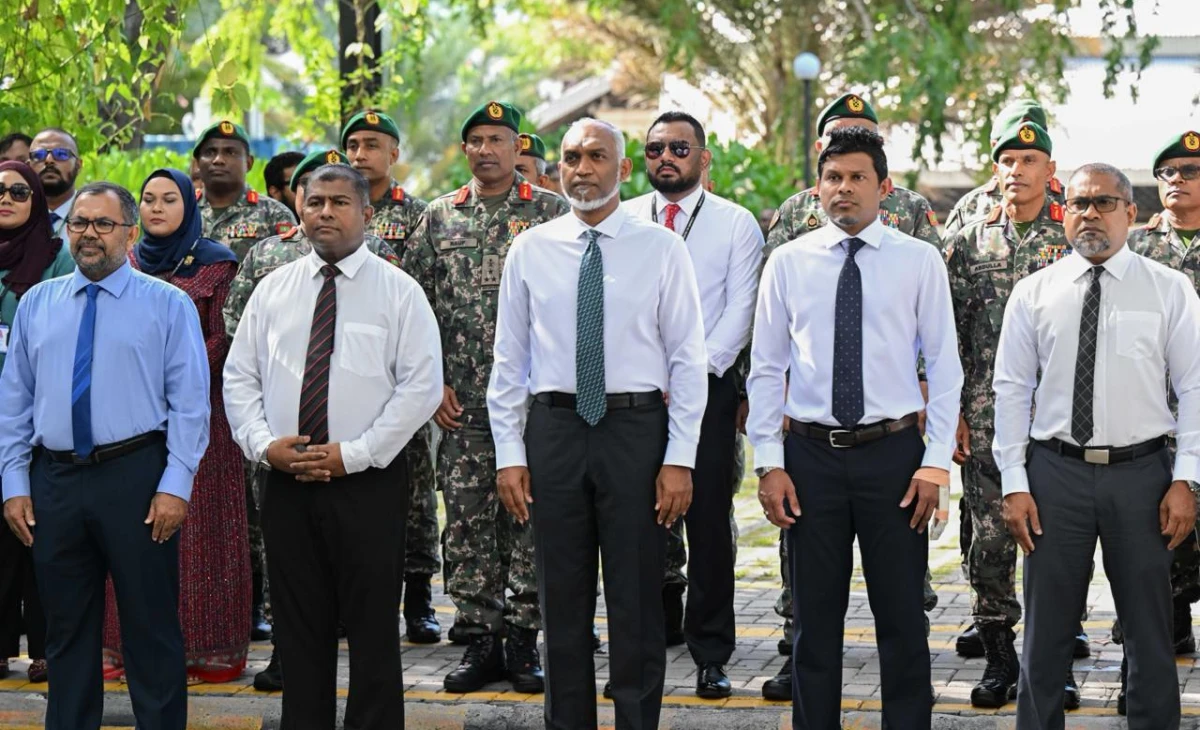
The 2004 Tsunami: A Defining Moment
On December 26, 2004, a calm morning in the Maldives turned catastrophic when a 9.1-magnitude earthquake near Sumatra triggered a series of tsunamis across the Indian Ocean. With an average elevation of only 1.5 meters above sea level, the Maldives was acutely exposed. Across the Maldives, nearly every atoll sustained damage. The losses were extensive:
Direct damages amounted to US$ 24.75 million, while recovery and reconstruction needs were later estimated at US$ 393 million.
Saltwater intrusion destroyed nearly half of cultivated land, resulting in US$ 6.46 million in agricultural losses.
The education sector was severely impacted, with 116 of 315 schools damaged.
Health infrastructure suffered capital losses of approximately US$ 12 million, including one regional hospital and 19 health centers.
More than 5,200 homes required repairs, while 2,879 had to be rebuilt.
The tourism industry faced heavy disruption, with 21 resorts forced to close temporarily and six requiring full reconstruction.
International support, coupled with strong community cooperation, helped drive an unprecedented national recovery effort. The government declared a state of national disaster, initiated the National Recovery and Reconstruction Plan (NRRP), and mobilized global partnerships to rebuild essential infrastructure.
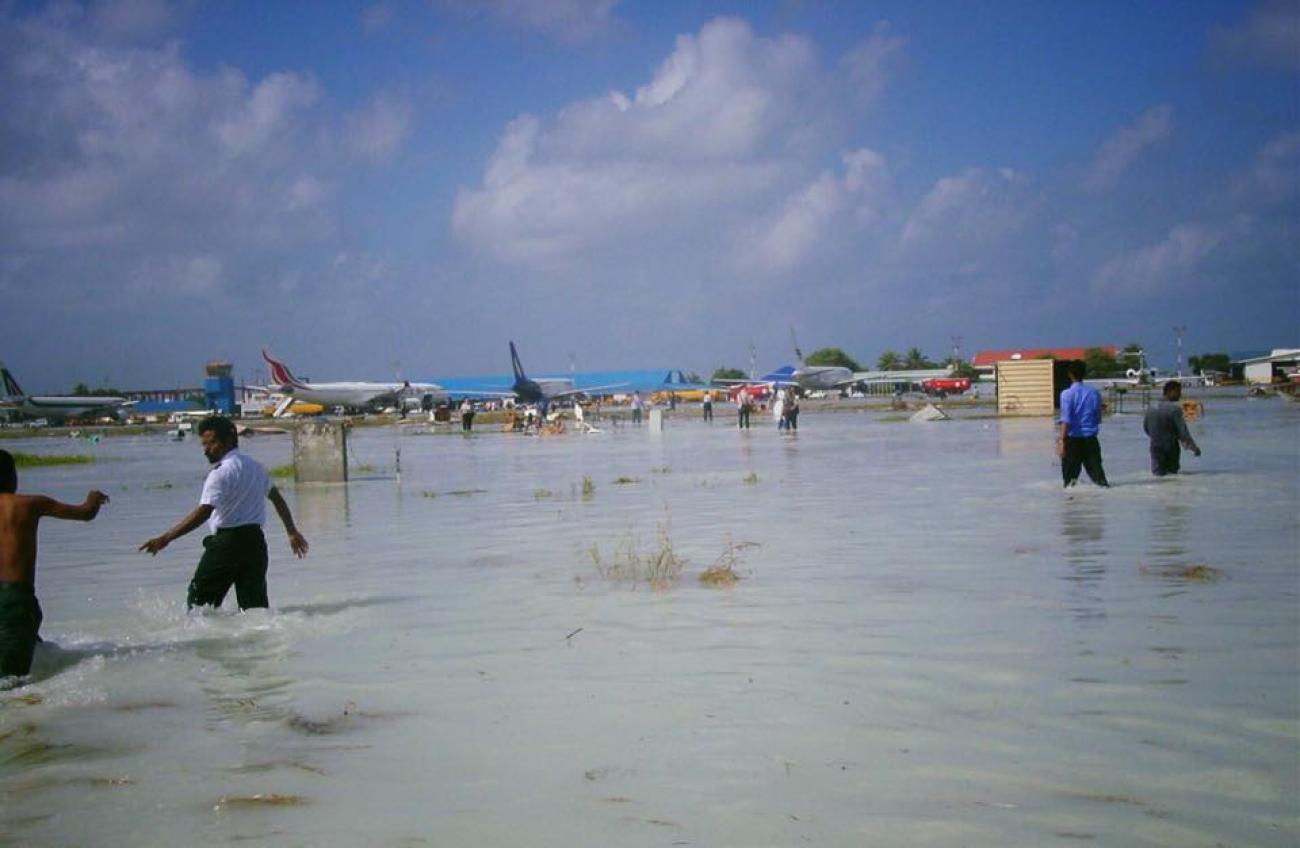
Aftermath of Tsunami at Hulhule International Airport in 2004. Photo- Hervé Thomas
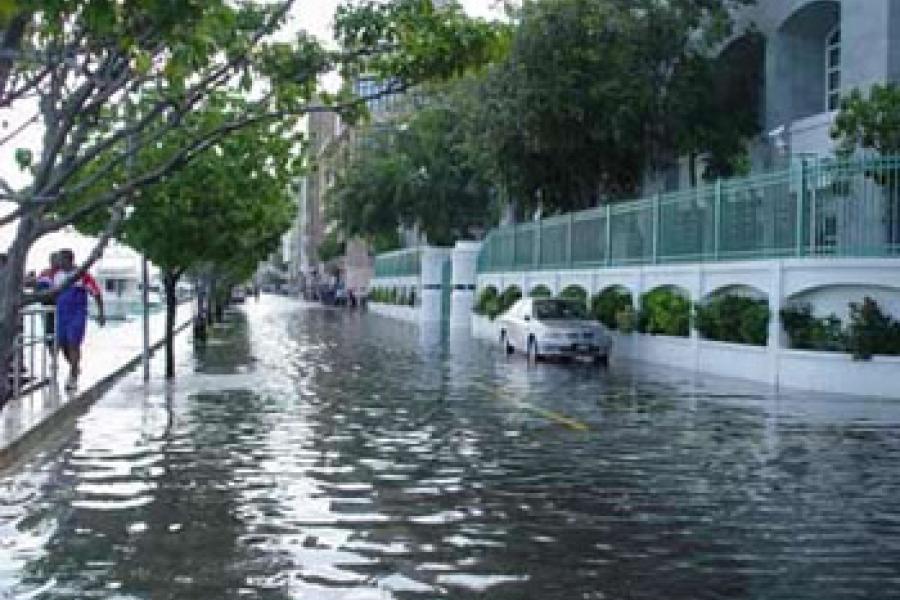
Flooded Streets of Male' in 2004. Photo- Hervé Thomas
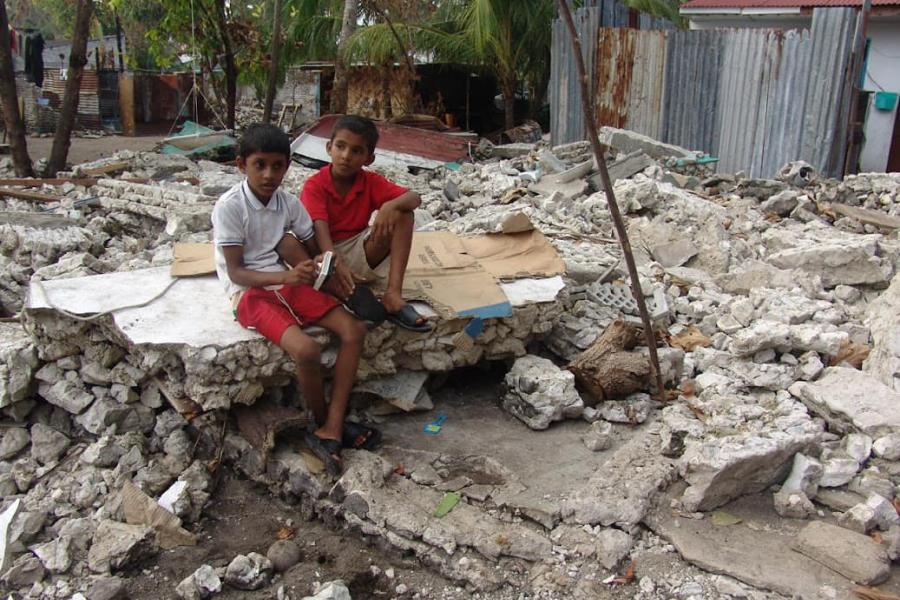
Two children sit amid the ruins of their island home, a quiet reminder of the devastation left by the 2004 Indian Ocean tsunami Photo - Mihaaru
The tsunami exposed the Maldives’ vulnerabilities and highlighted the absence of early warning systems and formal disaster management mechanisms. However, it also became a turning point, prompting the establishment of the National Disaster Management Centre (NDMC), which later evolved into the National Disaster Management Authority (NDMA).
Reflecting on Two Decades of Progress and advancement of the Disaster Risk Reduction Landscape in the Maldives
The twentieth anniversary of the tsunami provides an opportunity to honor those who lost their lives, acknowledge the resilience of survivors, and reflect on how far the Maldives has come in disaster preparedness and management. The lessons of 2004 continue to inform national efforts today, from the establishment of early warning systems to the integration of disaster risk reduction into development planning. The collective memory of that day has shaped a more prepared, coordinated, and resilient Maldives.
Over the past two decades, the Maldives has made notable progress in strengthening its disaster management system. The Disaster Management Act (Law 28/2015) provided a legal foundation for disaster preparedness and risk reduction, defining institutional roles at national and local levels. NDMA now leads national efforts to strengthen preparedness, risk reduction, and coordination among sectors and atolls.
Launch of the Maldives Disaster Risk Reduction Strategy 2024–2030
At the opening ceremony of the “Resilient 20” exhibition held at the National Art Gallery in Malé, Vice President of Maldives his Excellency Hussain Mohamed Latheef officially launched the Maldives Disaster Risk Reduction Strategy 2024–2030, developed by the National Disaster Management Authority (NDMA) and approved by the National Disaster Management Council on December 24, 2024.
In his address, the Vice President reflected on the nation’s recovery from the 2004 tsunami, noting that the Maldives’ progress toward resilience was guided by unity, faith, and collective determination. He commended the exemplary cooperation shown by citizens, security forces, and volunteers during the disaster and acknowledged the role of NDMA, which was established in response to the tragedy.
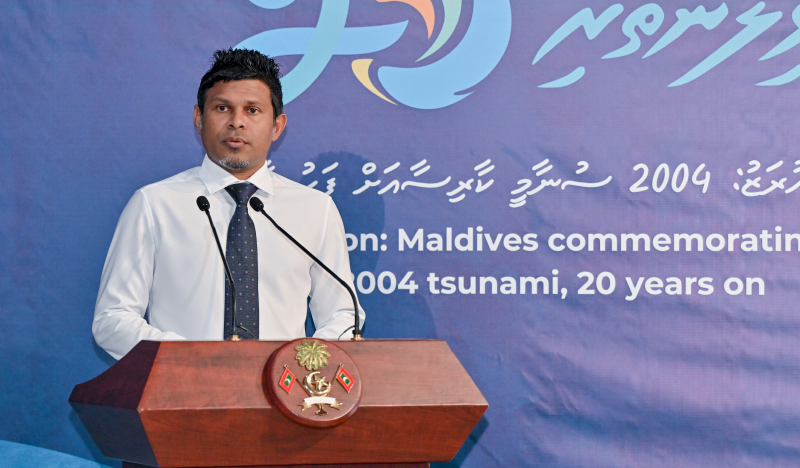
The newly launched DRR Strategy 2024–2030 marks a significant milestone in strengthening national disaster governance. It aligns with global frameworks such as the Sendai Framework for Disaster Risk Reduction (2015–2030) and the Early Warnings for All (EW4All) initiative.
The strategy outlines four key areas of focus:
Institutional coordination and governance
Comprehensive risk assessment and data management
Strengthened early warning and communication systems
Enhanced community preparedness and resilience
Together, these priorities aim to ensure that every community across the Maldives is safer, better informed, and more resilient in the face of natural and climate-related hazards.
Learn more about the Maldives Disaster Risk Reduction Strategy 2024–2030
Download the Maldives Disaster Risk Reduction Strategy 2024 - 2030
Read about the Strategy - here
‘Resilient 20’: Commemorating Two Decades of Recovery and Progress
To mark this milestone, the National Disaster Management Authority (NDMA) hosted an exhibition titled “Resilient 20” at the National Art Gallery in Malé, inaugurated by Vice President Hussain Mohamed Latheef.
The exhibition showcased the nation’s journey from disaster to recovery, reflecting on how the tsunami reshaped disaster management, planning, and awareness in the Maldives. It featured photographs, archival footage, and stories that captured both the devastation of 2004 and the resilience that followed.

Vice President Hussain Mohamed Latheef and NDMA Chief Executive Hisan Hassan at the opening of the ‘Resilient 20’ exhibition. Photo- President's Office

Vice President Hussain Mohamed Latheef viewing the art installation at Resilient 20 Exhibition. Photo - Presidents Office

Visitors viewing the archival photographs from Tsunami 2004. Photo - NDMA
Read more about the Resilient 20 Exhibition - Viluntheri Vihi (Resilient 20): Honouring Two Decades of Resilience and Unity
